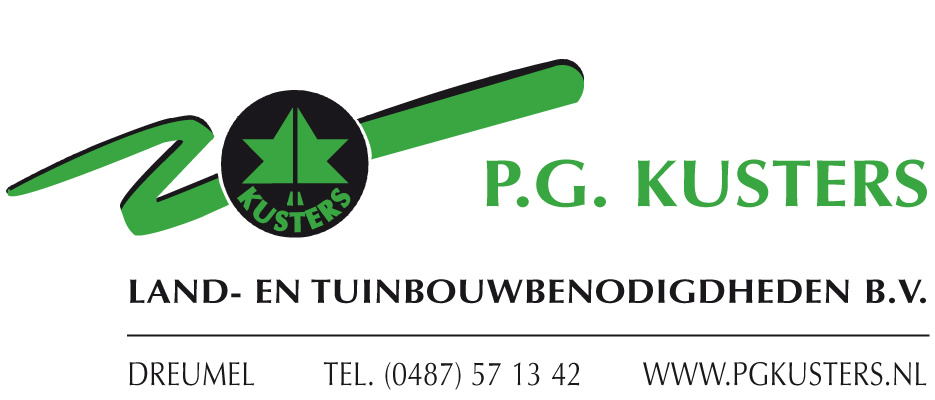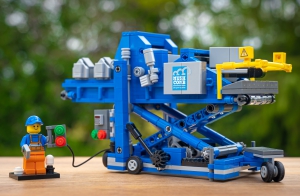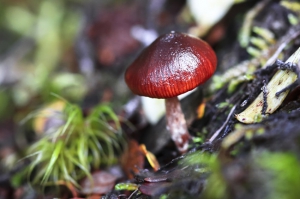
Mushroom Matter
Welcome on our platform. Why MUSHROOM MATTER? Because mushrooms play an important role in our lives as well in business. Our goal is to bring the world the very latest mushroom news with the upmost care to support the positioning of our beloved Mushroom.
Reishi Mushroom for Hair Growth
In this article, you’re going to learn about reishi mushroom and how it can grow your hair. You’ll learn of the latest scientific research surrounding this ancient herb, and how you can get started reaping its benefits today.
First, I’ll introduce you to this 2000-year-old herb and its uses in Ancient China.
Second, I’ll dissect recent scientific studies surrounding reishi mushroom and its various properties to determine whether it’s an effective treatment pattern baldness.
Third, I’ll share with you three ways of supplementing with reishi, two of which are my very own hair growth recipes which I’ve personally used with great results.
What is Reishi Mushroom?
Regarded in Asia as the “herb of spiritual potency,” reishi mushroom has been in use for thousands of years alongside other herbs, like Fo Ti. It goes by many names, including lingzhi and G. Lucidum, and grows at the base of deciduous trees.
While wild varieties of this mushroom are rare, lingzhi is cultivated today on hardwood logs and woodchips.
The mushroom itself has a corky texture and is flat-topped. It typically has a red varnish and a kidney-shaped cap, and while other colors do occur, red reishi is the most well-known and studied.
With a variety of therapeutic uses, including immunomodulation and as an antioxidant, it is no wonder researchers have focused in on this versatile mushroom and studied it extensively.
But, the question this article will aim to answer is, “can reishi be used to treat alopecia?”
We welcome GROWTIME on board of Mushroom Matter
We welcome GROWTIME on board of Mushroom Matter! We are very pleased with this international player in the mushroom industry on our platform.
GROWTIME is a Polish based company who specializes in commercial mushroom farm equipment, especially mushroom picking lorries.
They have years of experience in the area of building machines to support production processes.
Most of their expertise has been gained while working on technical solutions to support industrial scale mushroom farming and harvesting.
Their flagship products help automate harvesting processes, while their full product range includes standard, off-the-shelf designs as well as machines tailored to individual requirements and dimensions.
Their quest for the optimal solution never stops, while balancing efficiency with durability of each of their products.
To learn more about GROWTIME, please visit their website here!
Plant Breeders' Certificate for Lambert Spawn
Since the beginning of June 2021 Lambert Spawn has obtained their Plant Breeders' Certificate for their new brown hybrid. After investing in a premium quality new brown hybrid. As Lambert Spawn brown strains always have been in the 8-series, they called their new brown hybrid LS818. It was first introduced on the US market, but for some time it is also being delivered to other parts of the American continents. The market for brown mushrooms has been dominated for quite some while now, so Lambert Spawn had to make sure they were able to compete on quality, consistency and speed during growing.
The market in Northern America accepted the new LS818 quickly and the production for this new brown hybrid was boosted in USA to make sure to meet this new demand. This fast growing demand of the LS818 was caused due its high and consistent quality, but also the time of growing fitted the growers very well. Until now the LS818 has been delivered on Speed Spawn and Millet for the North American market.
Since Lambert Spawn obtained their Plant Breeders' Certificate for the European market, they started with small scale testing with different farms in Europe so far. To see how it reacts to European compost within different countries. So far the results look good as we have seen in the US-market. Step by step Lambert Spawn in Europe will increase their capacity for the LS818 and work closely together with European mushroom farmers to get the best results out of this new strain.
LEGO Headfiller, don't miss out on this!
Mush Comb announced before that in their 25th anniversary year they would introduce their own unique (covid-proof) celebrations.
One of the great ideas around this anniversary year is their headfilling machine made from LEGO!
Bob explains. “Our focus has always been on getting young people excited and on board of our industry. And even in these days LEGO is also extremely popular among adults.
The idea originated from my childhood. Relatives of ours owned a carrot farm and when my brother and I would stay over, we loved helping on the land during daytime and playing with tractors and other agricultural machinery toys until late in the evening.
I have great memories of that period, which resulted in creating these beautiful toys for the mushroom industry. After looking into various options, we found that using LEGO was the ideal way to make this possible.”
Do you also want to own a Lego headfiller?
Or even a Lego farm? That's possible!
To see how much interest there is in the sector to own a LEGO farm, Mush Comb is doing this inventory.
A great idea to give YOUR FARM as an unique Christmas gift to your family and/or to all harvesters, don't you agree!
If you are interested, please follow this link and let us know if you are interested!
Supercluster funding supports world first end-to-end robotic harvesting platform
Next Generation Manufacturing Canada (NGen), the industry-led organization behind Canada’s Advanced Manufacturing Supercluster, has announced almost $4.2 million in collaborative funding for a multi-partner project, led by Mycionics, that will deploy advanced robotic solutions to revolutionize the mushroom harvesting processes.
Mycionics, in partnership with Whitecrest Mushrooms Ltd. and Piccioni Brothers Mushroom Farm Ltd. will deploy and demonstrate the commercial viability of the Mycionics robotic harvesting system. The Mycionics system will fully automate mushroom harvesting using novel advanced robotics and automation. The entire harvesting process will be optimized through the application of data analytics, machine learning and artificial intelligence. Mycionics will be the first company in the world to successfully automate the end-to-end mushroom harvesting process for the fresh market.
“This is exactly the type of project we aim to support through the Innovation Superclusters Initiative,” said the Honourable François-Philippe Champagne, Minister of Innovation, Science and Industry. “Leading-edge Canadian companies like Mycionics promote Canadian solutions to global problems. This project pushes technological boundaries, develops advanced manufacturing and creates good jobs for Canadians while exporting groundbreaking technology to the world.”
As a complete system, Mycionics robotic harvester will increase the yield of a growing room through a “smart graze harvesting” strategy, picking over a 24-hour period and allowing the system to pick each mushroom at the optimal time instead of being restricted to harvesting only during normal working hours. Additionally, the ability to harvest robotically and the use of data analytics will increase food safety, traceability and disease detection.
As Mycionics grows and develops as a company, they will create numerous high-tech jobs in rural communities in Canada and around the world. The company is poised to see significant growth as they begin servicing farms throughout North America and Europe.
“This project serves to highlight exactly what NGen hopes to achieve through its supercluster project funding,” said Jayson Myers, CEO, NGen. “The Mycionics project brings together multiple partners from different sectors of the economy to develop and build a world class advanced manufacturing solution. In the process, Mycionics will create jobs, establish a Canadian supply chain for machine parts and assembly, help build out the entire advanced manufacturing ecosystem, and have a lasting and positive impact on Canadians and the economy.”
“Our partnership with NGen will accelerate commercialization of Mycionics patented robotic mushroom harvesting to solve the increasing labour shortage affecting mushroom farms globally. Mycionics robotics were designed to simply integrate with existing mushroom farm infrastructure commonly used throughout the world.” Michael Curry, CEO, Mycionics.
This is one of many projects funded by NGen through Canada’s Innovation Supercluster Initiative. NGen is investing $192 million of Supercluster funding and is aiming to leverage at least another $358 million of industry investments in collaborative industry-led projects before the end of March 2023 to facilitate collaboration and accelerate the implementation, scale-up, and commercialization of advanced technologies for manufacturing in Canada.
About NGen - Next Generation Manufacturing Canada
NGen is the industry-led not-for-profit organization that leads Canada’s Advanced Manufacturing Supercluster. Its mandate is to help build world-leading advanced manufacturing capabilities in Canada for the benefit of Canadians. NGen works to strengthen collaboration among its membership of more than 3,500 manufacturers, technology companies, innovation centres, and researchers, and provides funding and business support to industry-led initiatives that aim to develop, apply, or scale-up transformative manufacturing solutions in Canada for commercialization in global markets.
About Mycionics
Mycionics is dedicated to empowering mushroom farmers through the use of our robotic harvesting system that performs the labour-intensive work of harvesting mushrooms for the fresh market. Our solution provides mushroom farms of any size with a competitive edge against the global labour shortage afflicting the industry.
Mycionics’ globally patented robotic harvesting system continually picks, packs, and weighs mushrooms that meet fresh market quality and size requirements. Based on the farmer’s harvesting requirements, such as desired mushroom sizes, stem length, quality, harvesting schedule, and more, our mobile robotic harvester scans the mushroom beds, picks the desired mushrooms, trims the stems, and intelligently packs the mushrooms into boxes where they can be retrieved by the farm operators. In addition to our system’s harvesting capabilities, the data collection provides valuable insight into the farms existing growing and harvesting metrics, leading to better agronomic, commercial, and operational solutions for the farm.
Source: Next Generation Manufacturing Canada (NGen)
We are happy to announce that Mertens Mushrooms from Holland has joined our mushroom community!
As a dedicated supplier, Mertens believes in good cooperation towards a healthy growth for every business. The company is well versed in professional agriculture, garden retail and landscaping, and passionately shares its expertise. From its roots in Limburg (The Netherlands), Mertens has developed into a down-to-earth, involved, and most of all reliable and knowledgeable partner.
Mertens has almost 70 years of experience, relies on a team of about 130 permanent employees, has its own vehicle fleet and over 7,000 products in stock. From this basis, Mertens has managed to acquire a leading position in the mushroom sector. When it comes to mushrooms, Mertens is even the world’s biggest player. Our team is active in 41 countries, spread over six continents.
Focus on prevention
Mertens offers a complete package of products for growers and tunnel companies: biocontrol, films, cultivation, compost and sliding mats, fogging equipment, scales and hygiene products. Mertens’ range clearly reflects the trends and developments within the sector, in which prevention is now paramount. Today crop protection products, mainly biological, are only used when absolutely necessary. An example of prevention within mushroom cultivation is the use of nematodes; this worm species plays an important role in the control of mosquitoes in cultivation. Mertens has guided growers intensively in the application of these nematodes. To be able to inform its customers in the best possible way, Mertens ensures that its own expertise is always kept up-to-date.
International growth
From its roots in Limburg (The Netherlands), Mertens’ mushroom branch has increasingly focused abroad. Mertens is now also active in the growing mushroom market China, often indirectly through other supplies or consultants. This is a logical development, knowing that the number of Dutch mushroom growers has decreased drastically in recent years. The extensive online communication possibilities facilitate remote contact. In addition, the Mertens website is a source of information and provides a sophisticated ordering system for both domestic and foreign customers. Among other things, mushroom growers can find order lists, safety sheets and product information here. Online sales have grown strongly in the last few years, but Mertens also attaches great value to personal contact.
Mertens is ready to help you!
Moving with the times, synergy with other sectors, cooperation, flexibility, adaptation to market needs… These are the characteristics that have brought Mertens to where it is today, and all this is combined with expert advice.
Meet our Mushroom Team! They will be happy to help you.
Today in the leading role the 'King Stropharia', commonly known as the wine cap mushroom. This mushroom gets its name from the rich wine-red color and knows its origin in North America. The King Stropharia reaches 20 cm high and has a reddish brown rounded to flattened cap that can become 30 cm wide, therefor the name 'Garden Giant' or 'Godzilla Mushroom'. The gills have initially a pale color, then become gray and finally dark purple-brown. The firm flesh is white, as is the high stem that bears a wrinkled ring. King Stropharias have a delicious rich mushroomy flavor with undertones of potatoes and red wine and the stem has an asparagus-like texture. These delicious mushrooms are extremely low in sodium and calories, as well as fat and cholesterol free. They also contain iron, protein and calcium, making them a healthy addition to your meal.
Read all about this wonderful mushroom here.


























